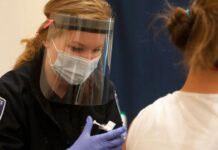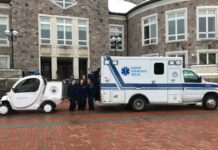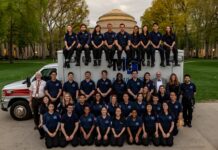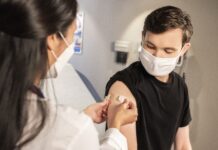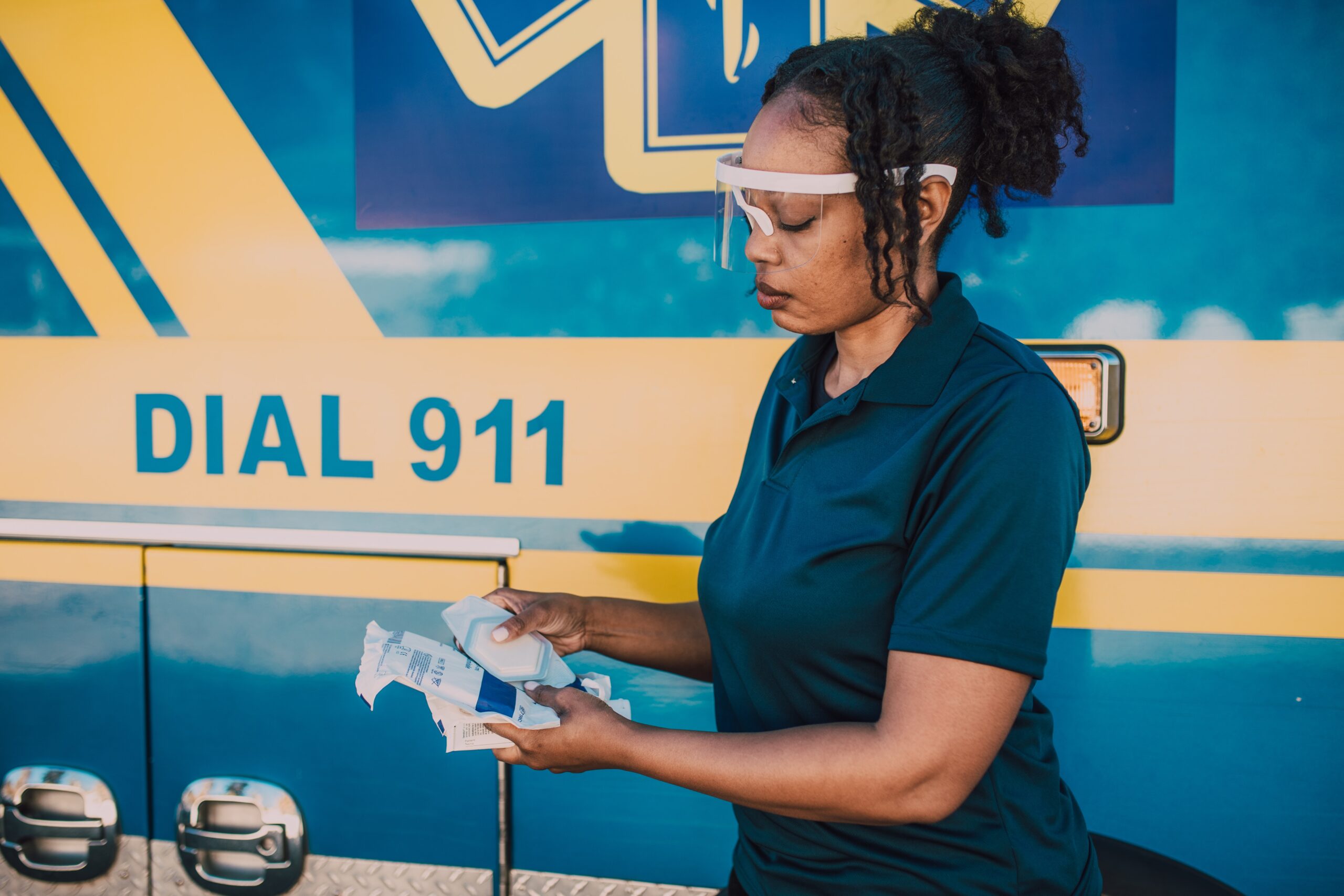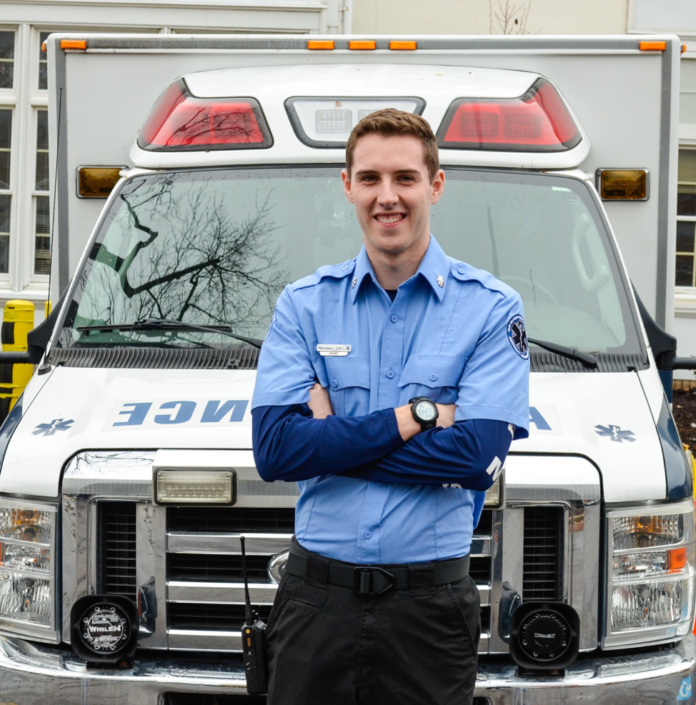
Paul Halliday was honored by the National Collegiate EMS Foundation (NCEMSF) as the 2019 Collegiate EMS Provider of the Year. At the 26th Annual Conference of NCEMSF, in Pittsburgh, PA, he was cited for his outstanding leadership and service as the chief of Case Western Reserve University (CWRU) EMS. Chief Halliday was instrumental in developing several programs at CWRU EMS, including an innovative training system. He is currently enrolled in a paramedic program in the Cleveland area and works as an orthopedic trauma research coordinator for MetroHealth Medical Center. He plans to attend medical school next year. JCEMS had the opportunity to talk to Chief Halliday about leadership in EMS, his passion for prehospital care, and his future career plans.
Tell us about how you first got involved in EMS.
I remember first seeing members of Case Western Reserve University (CWRU) EMS at an activities fair during my fist year of college. I had received my EMT certification before college and joining CWRU EMS seemed like an unparalleled opportunity to gain hands on experience with direct patient care – something many pre-meds struggle to find. A part of me also wanted to join solely to get to drive the ambulance! The next day I found their headquarters and that weekend I was already on a shift. My initial plans of running cross country that year didn’t pan out, so I immersed myself in EMS and quickly rose through the ranks, learning as much as I could along the way. The amazing team at CWRU EMS kept me coming back every day to respond to emergencies at all hours of the night.
As Collegiate EMS Provider of the Year, you were cited for your exemplary leadership of numerous initiatives. What project are you most proud of?
While serving with CWRU EMS, I had the opportunity to help with a number of amazing programs including CPR education, Stop the Bleed, and first aid training. We made strides in growing our number of members, purchasing new vehicles, and buying new equipment. The most meaningful project I helped tackle, however, was developing a new training system. I believe EMS as a whole struggles to train new EMTs in ways that make them prepared for real scenarios. Crossing the bridge between textbook and real life is difficult and requires a comprehensive understanding of both clinical care and operations. We created a checklist-based training program that systematically trains members in all of our equipment and procedures, culminating with a number of realistic scenarios. While there will always be room to improve, this system has driven the organization forward and improved patient care and clinical skills.
Leading an EMS organization as a student can present intense challenges. What advice do you have for other leaders of collegiate EMS organizations?
Collegiate EMS is a unique subset of prehospital care and an incredible platform for training both leaders and providers. New collegiate EMS leaders should never be afraid to challenge “the way we’ve always done it,” demand evidence-based medicine, or seek help from experts.
“New collegiate EMS leaders should never be
afraid to challenge ‘the way we’ve always
done it,’ demand evidence-based medicine,
or seek help from experts.”
It can be daunting to jump into the role of chief of a 50+ member organization and spark change. New leaders should keep in mind that we are all still learning and there is not just one right way to run an organization.
What are your future career goals? How has your collegiate EMS experience prepared you?
After completing paramedic school this year, I’ll be heading to medical school. I hope that my experience in the field has given me a strong foundation in patient assessment and hands on skills. CWRU EMS has taught me things no textbook could – everything from learning you need a prescription for sterile water to how to stay calm while surrounded by five patients at a car accident. While both stressful and challenging, EMS has taught me to keep my cool in any situation and to adapt to whatever is thrown at me. If anything, working as an EMT has given me an appreciation for the importance of advanced prehospital care and the impact we can have on patient outcomes.

